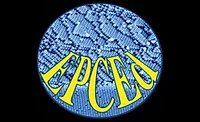Light-Colour Phenalkamine, Myth or Reality?

Paint chemists are naturally influenced by the colour of the raw materials they use for their binder formulations. Therefore, yellowish or, even worse, brownish-coloured raw materials are perceived as inadequate to formulate many pale-shade coatings. The paint chemist could, therefore, not approach technical problems with an open mind. This is particularly the case for primer formulations that will be top-coated with pigmented coatings, thereby hiding the colour of the primer.


New Very Light-Colour Phenalkamine
Recent development in phenalkamine technology has led to a new, very low-colour phenalkamine, even lower in colour than a commercial polyamide diluted with either 10 or 30 % xylene (Figures 1 and 2). Actually a 4 Gardner colour is achievable.
This new phenalkamine, named LX 5307, is a light-colour version of LITE 2001S90
from Cardolite. The colour improvement is illustrated in Figure 3. Cure speed
of Cardolite LX5307 is identical to its counterpart LITE 2001S90 (Figure 4).

New Phenalkamine - Advantages/Disadvantages
The paint chemist can now formulate primer with phenalkamine having a very light colour. Properties of the primer will be exactly the same as by using the coloured versions.
Unfortunately, to make these low-coloured phenalkamines, one has to use a more
sophisticated process, leading to higher production costs. As a consequence,
the price of such products will be orders of magnitude higher than their coloured
counterparts.

The question is: is it really necessary to use a low-colour curing agent for a primer? However, such innovation by a leader in the technology, if not at first sight very useful commercially, sets up the basis for future promising developments in -curing agent chemistry.
Looking for a reprint of this article?
From high-res PDFs to custom plaques, order your copy today!




